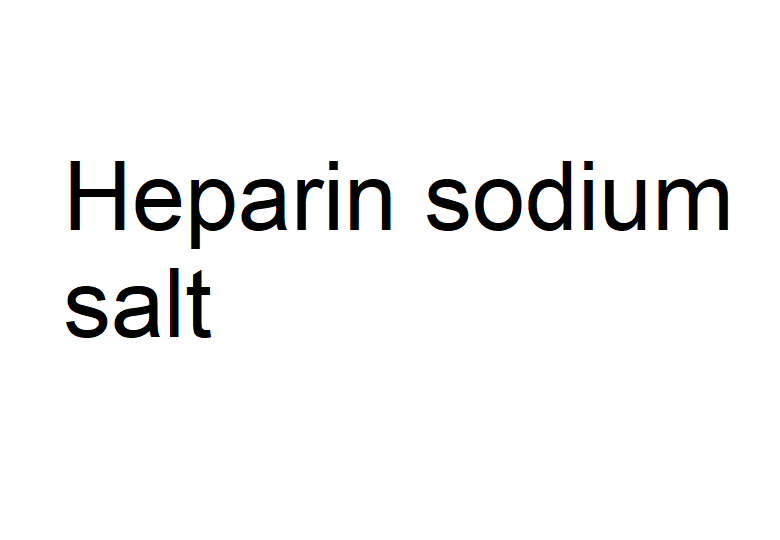Powder: -20°C for 3 years | In solvent: -80°C for 1 year


Heparin sodium is a sulfated polysaccharide, which belongs to the family of glycosaminoglycans. It is utilized as an anticoagulant and interacted with diverse proteins for numerous important biological activities.Heparin sodium salt (Sodium heparinate) significantly inhibits exosome-cell interactions.

| Pack Size | Availability | Price/USD | Quantity |
|---|---|---|---|
| 100 mg | In stock | $ 41.00 | |
| 500 mg | In stock | $ 76.00 |




| Description | Heparin sodium is a sulfated polysaccharide, which belongs to the family of glycosaminoglycans. It is utilized as an anticoagulant and interacted with diverse proteins for numerous important biological activities.Heparin sodium salt (Sodium heparinate) significantly inhibits exosome-cell interactions. |
| In vitro | Heparin contains a speci?c pentasaccharide sequence that binds and activates the plasma proteinase inhibitor AT, which accounts for most of the increase in inhibitory activity toward Factor Xa induced by heparin. Heparin binds, via the speci?c pentasaccharide sequence, to AT is a two-step process, involving formation of an initial complex with a Kd of ~4×10?5M, followed by conformational changes in both the AT and saccharide moieties. Heparin 12-mer binds to FGF2 monomer covalently is able to induce FGFR activation (stimulate mitogenesis). [1] Heparin induces aggregation of platelets in citrated platelet-rich plasma and enhances platelet aggregation and serotonin secretion induced by other agents, and this action of heparin is blocked by substances that elevate platelet cyclic AMP and by EDTA but not by inhibitors of platelet cyclooxygenase. [2] Heparin controls, through a post-translational mechanism, the levels of specific cassettes of positively charged proteases inside mast cells. [3] Heparin activates the inhibition of thrombin by antithrombin by bringing them into close apposition, but there is also a direct activation of inhibition due to an overall conformational change induced by the binding to the core pentasaccharide present in both heparin and heparans. [4] |
| Kinase Assay | In vitro assay of CYP17: The in vitro CYP17 inhibitory activity of Galeterone is evaluated using rapid acetic acid releasing assay (AARA), utilizing intact P450c17-expressing E. coli as the enzyme source. It involves the use of [21-3H]-17α-hydroxypregnenolone as the substrate, and CYP17 activity is measured by the amount of tritiated acetic acid formed during the cleavage of the C-21 side chain of the substrate. IC50 value is obtained directly from plots relating percentage inhibition versus inhibitor concentration over appropriate ranges. |
| Synonyms | Sodium heparinate, Heparin sodium |
| Molecular Weight | 1157.89 |
| Formula | C26H42N2NaO37S5 |
| CAS No. | 9041-08-1 |
Powder: -20°C for 3 years | In solvent: -80°C for 1 year
H2O: 20 mg/mL, Sonication is recommended.
You can also refer to dose conversion for different animals. More
bottom
Please see Inhibitor Handling Instructions for more frequently ask questions. Topics include: how to prepare stock solutions, how to store products, and cautions on cell-based assays & animal experiments, etc.
Heparin sodium salt 9041-08-1 Autophagy Metabolism Proteases/Proteasome Factor Xa Thrombin Sodium heparinate Heparin sodium inhibitor inhibit
